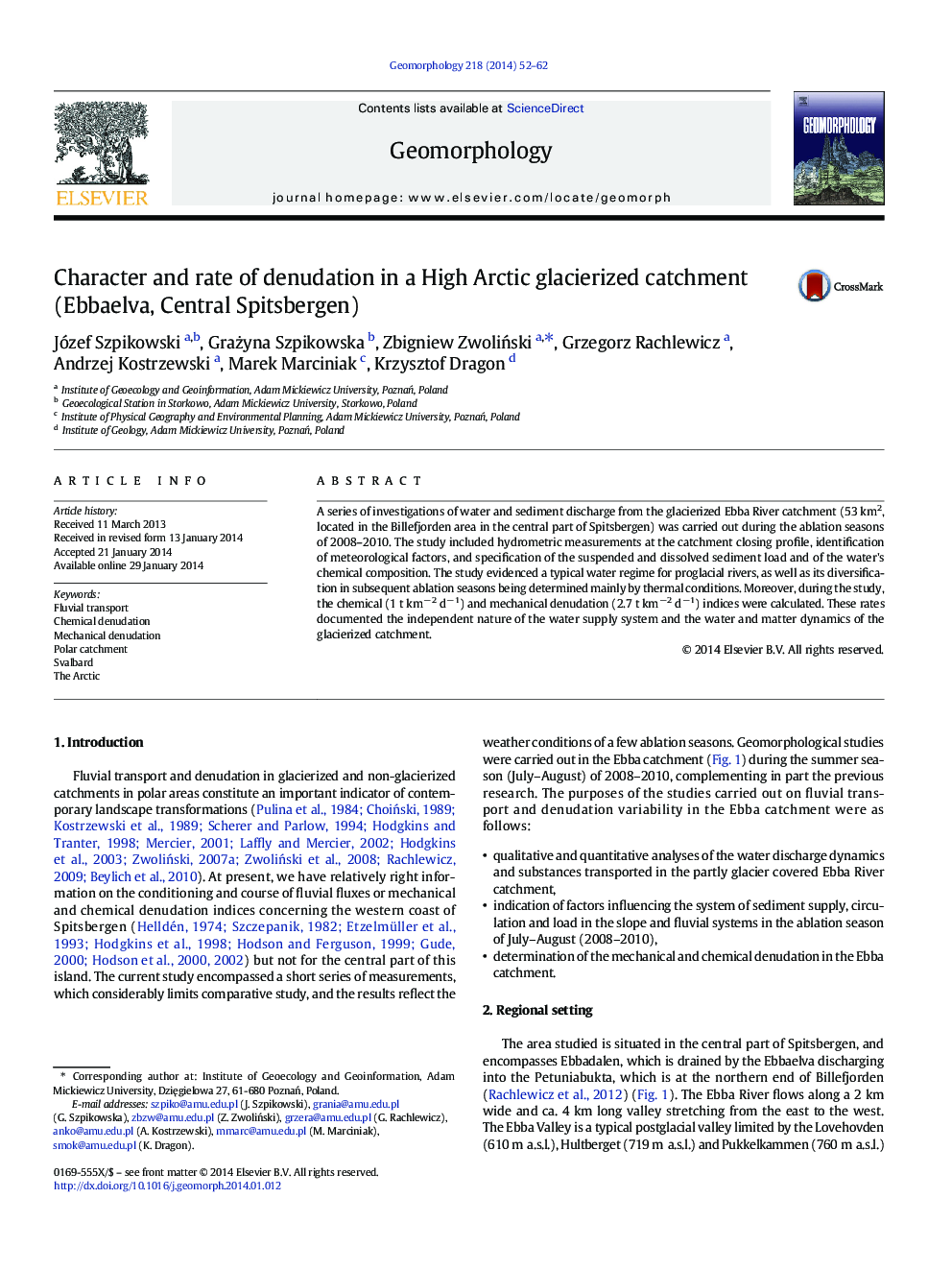| کد مقاله | کد نشریه | سال انتشار | مقاله انگلیسی | نسخه تمام متن |
|---|---|---|---|---|
| 4684491 | 1635431 | 2014 | 11 صفحه PDF | دانلود رایگان |
• Seasonal and diurnal water discharges are typical for catchments of the partially glacier-covered High Arctic.
• The average water discharge in the three ablation seasons (2008–2010) was 30% greater at 8 p.m. than at 8 a.m.
• Water with a HCO3– - SO42- - Ca2 + hydrogeochemical type is predominant at the beginning of the ablation season, while a SO42- - HCO3– - Ca2 + type is predominant towards the end of the season.
• Chemical denudation values were relatively close to one another in contrast to mechanical denudation; the average daily chemical denudation value was 0.04 mm y- 1 and mechanical denudation – 0.11 mm y- 1.
• The values obtained indicate that mechanical denudation processes dominate over chemical denudation processes in the geoecosystem of the Ebba River catchment.
A series of investigations of water and sediment discharge from the glacierized Ebba River catchment (53 km2, located in the Billefjorden area in the central part of Spitsbergen) was carried out during the ablation seasons of 2008–2010. The study included hydrometric measurements at the catchment closing profile, identification of meteorological factors, and specification of the suspended and dissolved sediment load and of the water's chemical composition. The study evidenced a typical water regime for proglacial rivers, as well as its diversification in subsequent ablation seasons being determined mainly by thermal conditions. Moreover, during the study, the chemical (1 t km −2 d −1) and mechanical denudation (2.7 t km −2 d −1) indices were calculated. These rates documented the independent nature of the water supply system and the water and matter dynamics of the glacierized catchment.
Journal: Geomorphology - Volume 218, 1 August 2014, Pages 52–62
